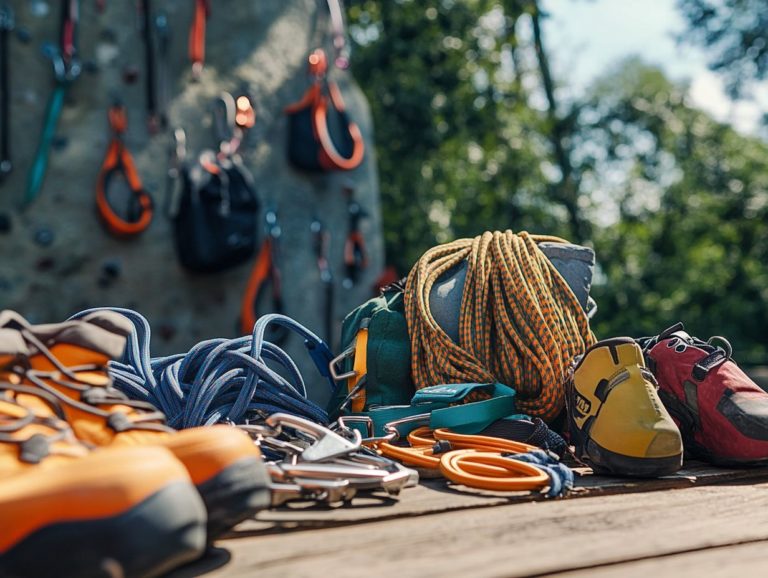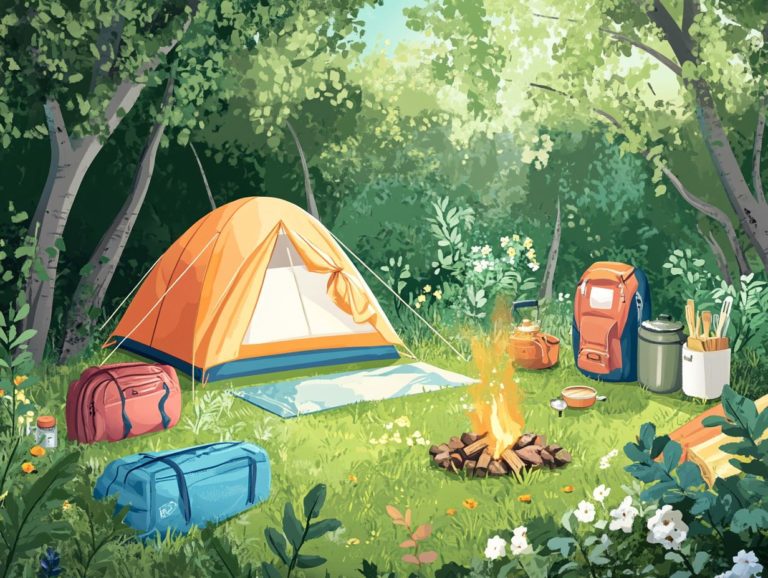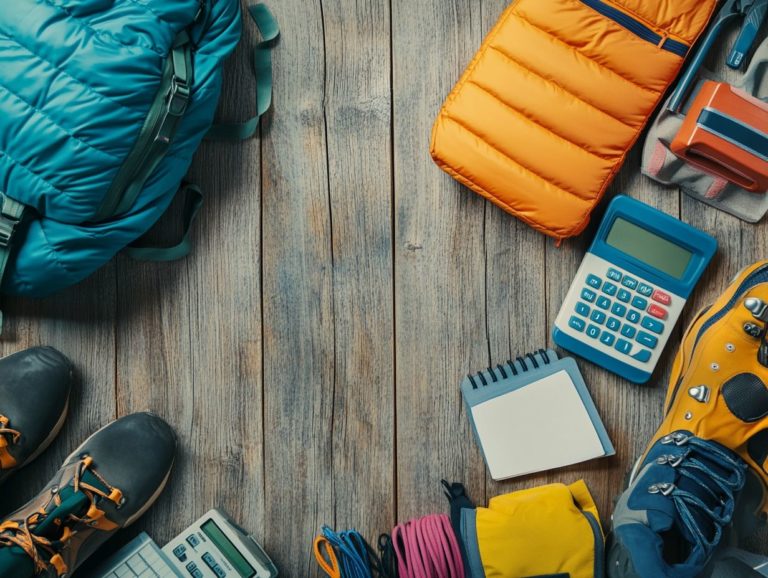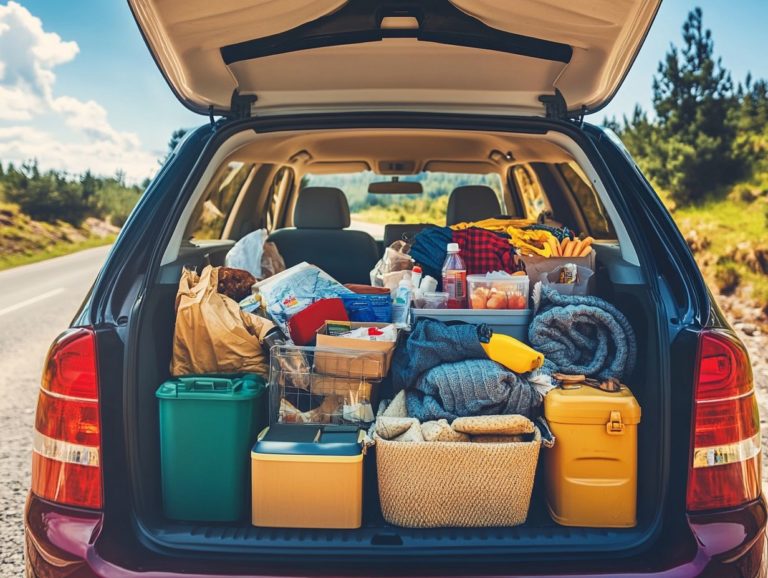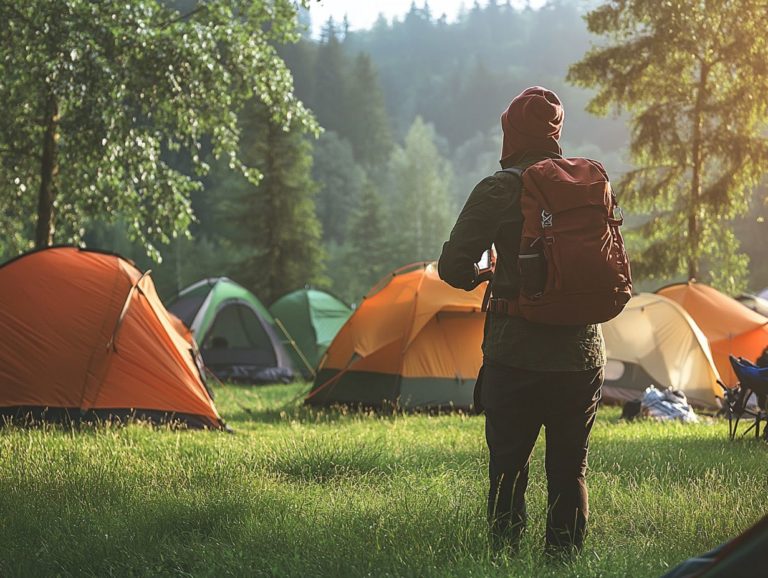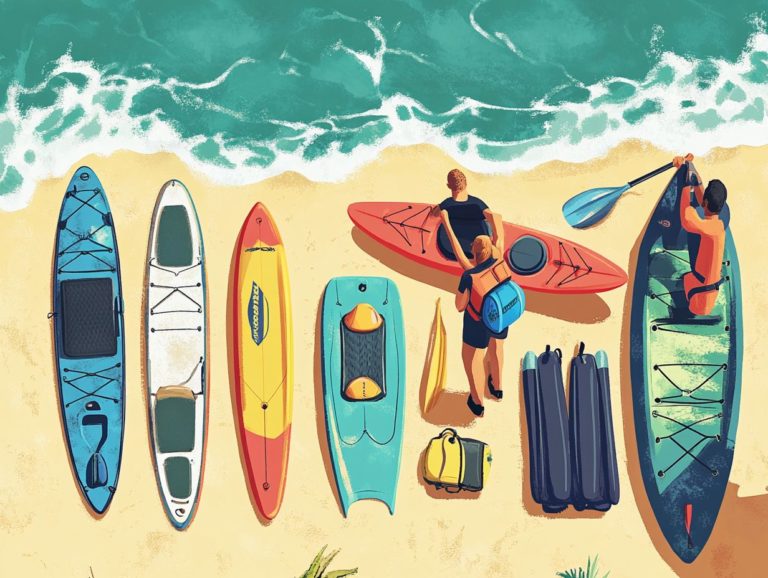Key Tips for Buying Second-Hand Outdoor Gear
Looking to prepare for your next adventure without draining your wallet?
Opting for second-hand outdoor gear presents remarkable advantages.
Before you plunge into the world of pre-owned equipment, it s crucial to grasp the factors that can influence your purchase think condition, brand reputation, and how well the gear aligns with your specific needs.
This guide will help you find top-quality second-hand gear, expertly inspect items, and master negotiation tactics to secure the best possible deal.
Uncover the secrets to transforming second-hand shopping into an exceptionally rewarding experience!
Contents
- Key Takeaways:
- Why Buy Second-Hand Outdoor Gear?
- Factors to Consider When Buying Second-Hand Gear
- Where to Find Second-Hand Outdoor Gear
- Tips for Inspecting and Testing Second-Hand Gear
- Negotiating and Making a Purchase
- Frequently Asked Questions
- What are the key tips for buying second-hand outdoor gear?
- Is it safe to buy second-hand outdoor gear?
- What are some common items to buy second-hand for outdoor activities?
- Can I return second-hand outdoor gear?
- How can I ensure the gear is in good condition?
- Are there any red flags to watch out for when buying second-hand outdoor gear?
Key Takeaways:
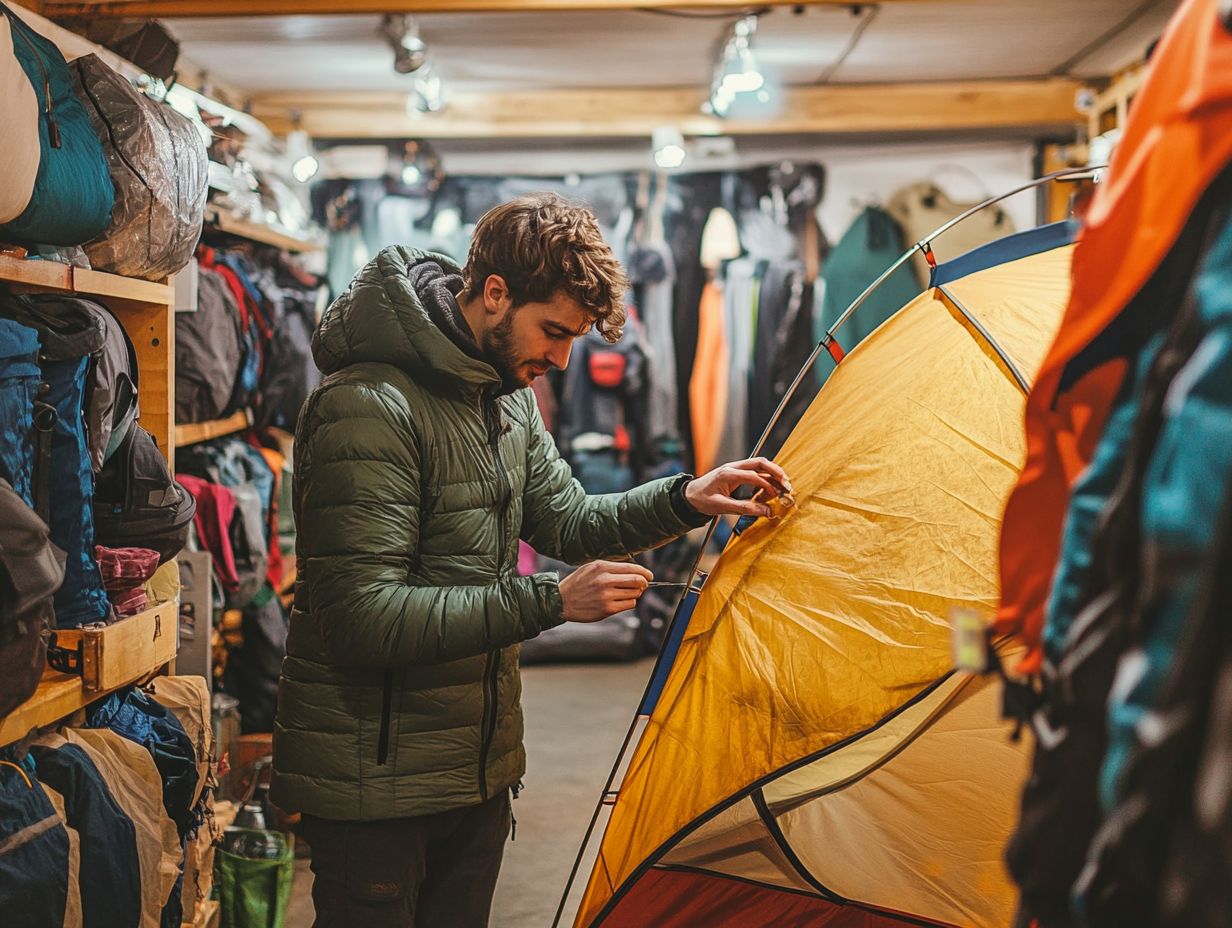
- Consider the condition, quality, brand, and compatibility with your needs when buying second-hand outdoor gear to ensure value for money.
- Save money and reduce waste by buying second-hand outdoor gear from online marketplaces, thrift stores, consignment shops, garage sales, and local events.
- Inspect and test second-hand gear before purchasing. Look for signs of wear and tear, and assess the overall quality. Negotiate for a fair price and practice good etiquette when making the purchase.
Why Buy Second-Hand Outdoor Gear?
Purchasing second-hand outdoor gear is not just a savvy financial choice; it’s also a meaningful contribution to a sustainable future.
When you select used equipment from esteemed brands like Patagonia, REI, or North Face, you re not only keeping your budget intact but also minimizing the impact on the environment linked to new manufacturing.
Embracing this eco-conscious approach enables you to relish your outdoor adventures without depleting your resources, all while acquiring quality used items that still have plenty of life ahead.
Benefits and Cost Savings
You will find remarkable benefits and cost savings when you purchase used outdoor gear.
For example, a premium tent that typically retails for around $400 might be available for just $150 or even less when you shop used.
This significant price reduction not only makes outdoor adventures more accessible but also allows you to invest in superior equipment, elevating your overall experience.
Reputable sources such as thrift stores, online marketplaces, and local gear exchanges offer an impressive array of gently used items, many of which have been meticulously cared for.
By choosing used gear and clothing, you can acquire everything you need without straining your budget, enabling you to enjoy more frequent outings and immerse yourself fully in your favorite activities.
Factors to Consider When Buying Second-Hand Gear
When you re looking to purchase used outdoor gear, it s essential to assess a few key factors.
Take a close look at the condition and quality of the items, consider the brand s reputation, and examine specific features that align with your outdoor activities and personal needs.
This careful evaluation will ensure that you make a well-informed decision and find gear that truly enhances your adventures.
Condition and Quality
Evaluating the condition and quality of second-hand outdoor gear is crucial for ensuring you have reliable and safe equipment for your adventures in the great outdoors.
This assessment enables you to make informed choices, significantly reducing the risk of equipment failure when it matters most.
To thoroughly assess the gear, begin with visual inspections; look for any signs of wear and tear, such as frayed straps or rusted components.
Next, carry out usability tests; unzip bags, test tent poles, and make sure all mechanical parts function smoothly.
It s also wise to familiarize yourself with the specific criteria for different types of gear. For example, check the fabric integrity of tents or the tread wear on footwear.
Noting these factors will not only enhance your outdoor experience but also promote safety and enjoyment as you explore the wonders of nature.
Start your second-hand gear journey today!
Brand and Specific Features
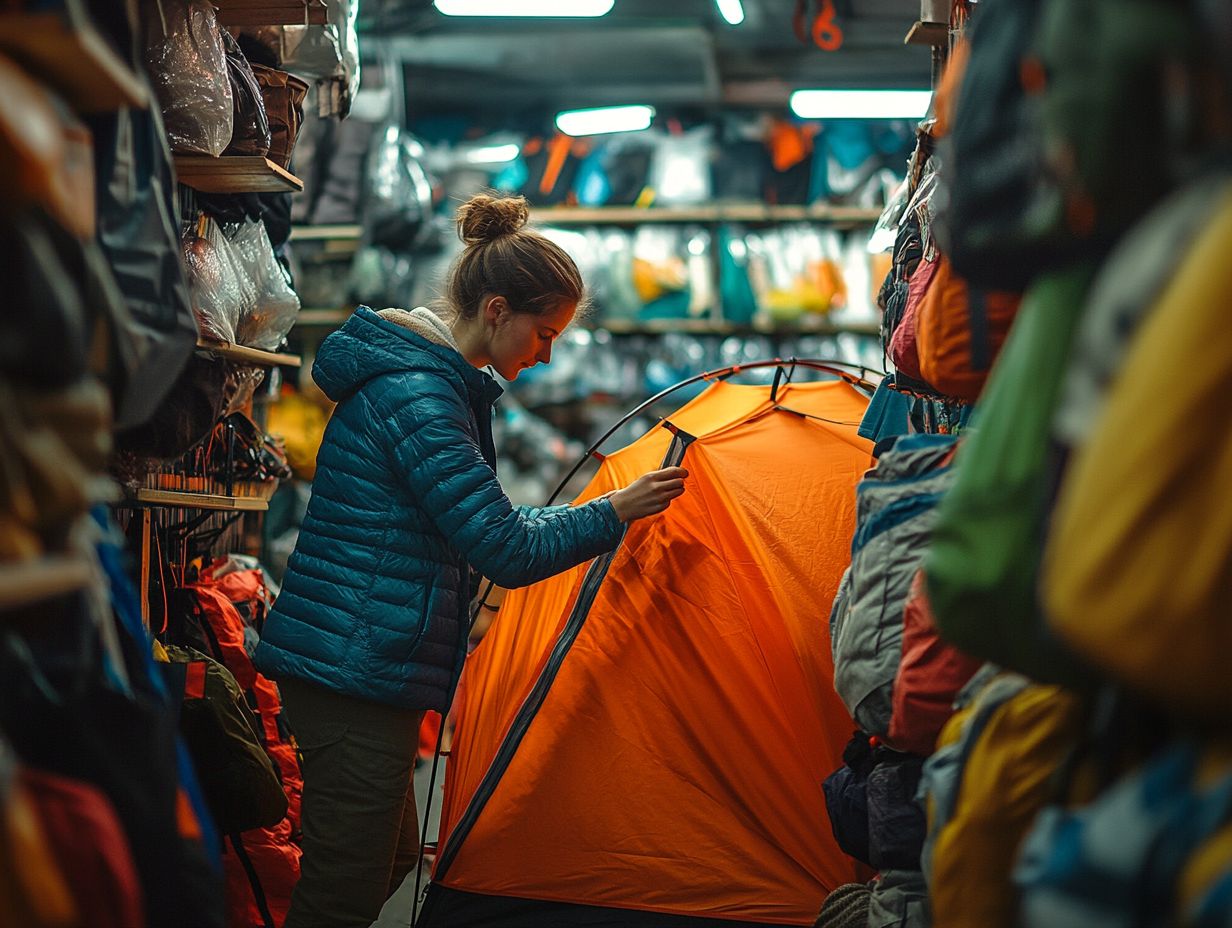
Choosing reputable outdoor brands enhances your experience. Understanding their specific features helps you select the best gear.
Renowned brands such as Patagonia, REI, and North Face prioritize quality craftsmanship. Their innovative designs stand the test of time and ensure your safety.
For example, an adjustable climbing harness from one of these brands doesn t just provide a customized fit for maximum comfort; it also includes safety features that can help prevent accidents during high-stakes activities.
Choosing gear from eco-friendly brands helps the planet. These brands often use recycled materials and ethical practices. This choice not only elevates your outdoor adventures but also supports a healthier planet for future generations.
Compatibility with Your Needs
Ensuring that second-hand outdoor gear aligns perfectly with your needs is essential for maximizing both performance and enjoyment during your adventures.
To accomplish this, you must thoroughly evaluate whether the gear meets the specific demands of your chosen activities, whether that’s hiking, climbing, or something else entirely.
Begin by assessing the item’s condition and specifications against your personal preferences, considering factors like weight, durability, and weather resistance.
Pay attention to any signs of wear and consider the brand’s reputation for quality. Reflect on how often you plan to engage in these activities; investing in reliable gear can significantly enhance both your safety and overall experience.
By understanding your own style and requirements, you can ensure that the equipment truly serves you well in the great outdoors.
Where to Find Second-Hand Outdoor Gear
Finding second-hand outdoor gear is exciting! Explore online marketplaces, thrift stores, and garage sales for unique treasures.
Online Marketplaces
Online marketplaces present a seamless avenue for acquiring used outdoor gear, connecting you with individual sellers who frequently offer budget-friendly options tailored for outdoor sports enthusiasts.
These platforms not only feature a wide variety of items but also enable you to explore user reviews and ratings, which can play a pivotal role in your purchasing decisions. By immersing yourself in firsthand experiences, you can better assess the quality and reliability of the gear under consideration.
Direct communication with sellers is essential. It allows you to ask questions and clarify details. This interaction often culminates in a more gratifying purchasing experience, ensuring that the gear aligns perfectly with your specific needs and expectations.
Thrift Stores and Consignment Shops
Thrift stores and consignment shops are a goldmine! You ll find quality outdoor clothing and gear at amazing prices.
If you revel in the thrill of unique finds, these venues transform shopping into an exhilarating adventure. With a little patience, you might uncover last season’s hidden gems that add character to your collection!
To truly elevate your experience, hone your keen eye and compile a checklist of essentials keep an eye on fabric condition, inspect zippers, and assess overall wear.
Shopping during off-peak hours can also offer a serene atmosphere, allowing you to select items thoughtfully, free from the chaos of crowds. Sharpen your evaluation skills! This will make your treasure-hunting journey even more rewarding.
Garage Sales and Local Events
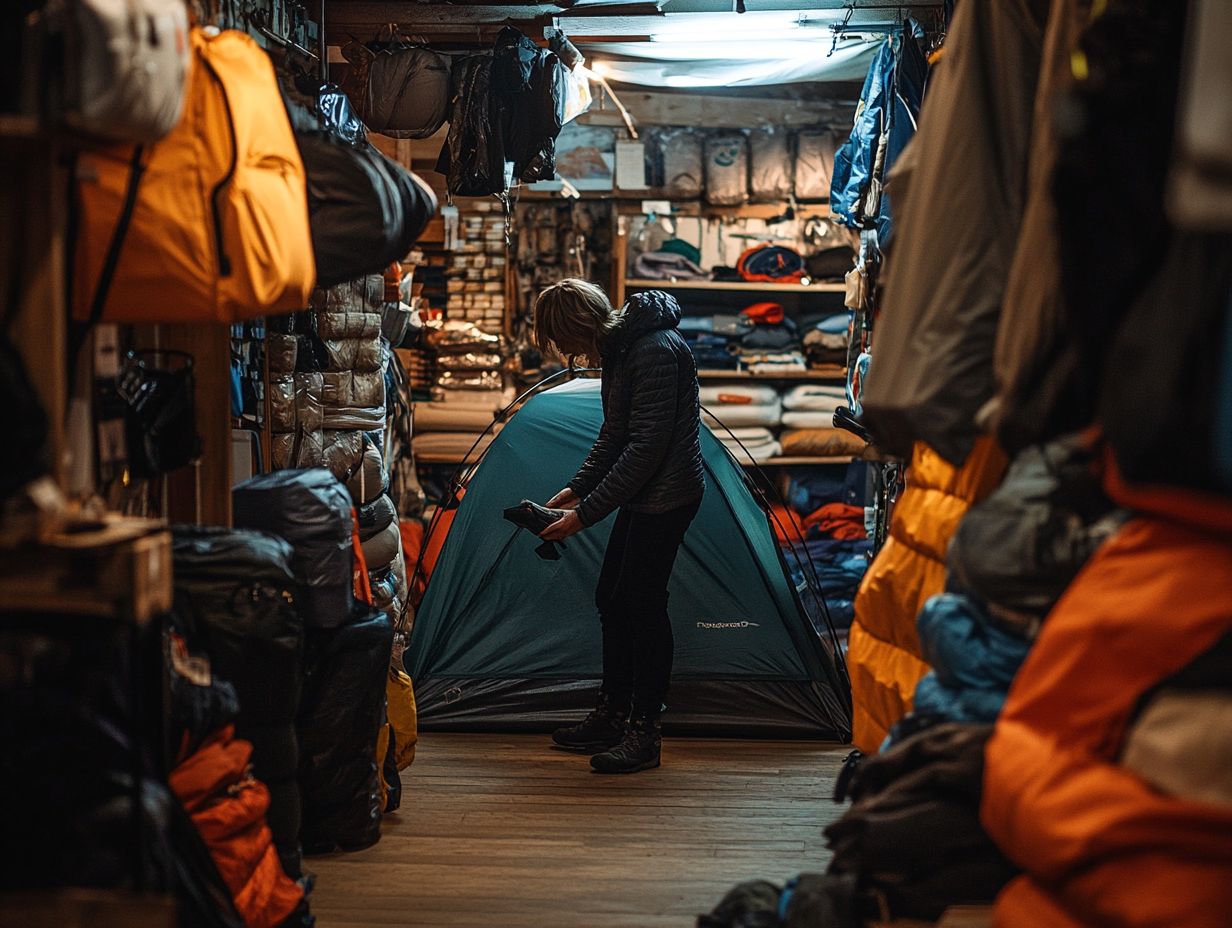
Garage sales and local events offer you a remarkable chance to uncover second-hand outdoor gear while forging connections within the outdoor community.
These gatherings not only allow you to save some cash but also create a relaxed environment where fellow enthusiasts can exchange experiences, tips, and recommendations. By attending these sales, you can cultivate relationships that may lead to finding partners for future adventures or even casual meet-ups.
Plus, the thrill of bargaining haggling over prices elevates the shopping experience, allowing you to leave with exceptional deals.
To discover these hidden gems in your area, tap into local social media groups, community bulletin boards, or specialized websites designed to promote such events. Keeping an eye out for seasonal festivals or neighborhood clean-out days can also yield rewarding finds. Don t miss out on the best deals act fast!
Tips for Inspecting and Testing Second-Hand Gear
When you re in the market for second-hand gear, you ll want to know some handy strategies for inspecting and testing items. This approach is vital to guarantee not only safety but also optimal functionality, especially when it comes to safety equipment.
What to Look for and How to Assess Quality
Knowing what to look for and how to assess the quality of second-hand outdoor gear can save you from making costly mistakes.
When you evaluate these items, consider specific factors that indicate their overall condition. Look for signs of wear such as frayed seams on backpacks or rust on climbing gear to gain valuable insight into how much life is left in the equipment.
Examining functionality is crucial; make sure zippers operate smoothly and that the material hasn t degraded. Safety should always be at the forefront of your mind; inspect harnesses for any structural damage or excessive wear.
Each type of gear, from tents to sleeping bags, requires a tailored approach to quality assessments. This meticulous attention to detail can help you spot critical issues before you make a purchase.
Negotiating and Making a Purchase
When you re negotiating and purchasing second-hand outdoor gear, grasping the nuances of etiquette can significantly enhance your chances of securing better deals and ensuring smooth transactions with individual sellers.
Etiquette and Strategies for Getting a Good Deal
Practicing good etiquette and employing effective strategies can significantly improve your chances of securing a great deal on second-hand outdoor gear.
Engaging with sellers respectfully creates a positive atmosphere and encourages open dialogue, which is essential for successful negotiation. Approach your conversations with a friendly demeanor, asking insightful questions about the items history and condition. Understanding their market value is equally crucial; this knowledge enables you to determine a fair price while also demonstrating your appreciation for the seller’s perspective.
In terms of bargaining, navigate the process with care, taking cues from community norms to facilitate a fair exchange that leaves both parties feeling satisfied.
Frequently Asked Questions

What are the key tips for buying second-hand outdoor gear?
1. Do your research: Before making a purchase, research the brand, model, and condition of the gear to ensure it meets your needs and is priced fairly.
2. Inspect the gear in person: If possible, always check the gear in person for any defects or damage that may not be visible in online photos.
3. Know your measurements: Outdoor gear, such as clothing and backpacks, often has specific sizing and fit. Make sure you know your measurements to ensure a proper fit.
4. Ask for details: Don t hesitate to ask the seller questions about the gear, such as how often it was used, any repairs or modifications, and if it comes with any warranties or guarantees.
5. Negotiate the price: When buying second-hand, there is often room for negotiation. Be prepared to make an offer, and don t be afraid to walk away if the price doesn t match the condition of the gear.
6. Check the seller’s reputation: Before buying from an online marketplace or second-hand store, read the seller’s reviews and ratings to ensure they have a good reputation.
Is it safe to buy second-hand outdoor gear?
Buying second-hand outdoor gear can be safe as long as you research and follow these key tips. Make sure you carefully check the gear and ask the seller for details to ensure it is in good condition and meets your needs.
What are some common items to buy second-hand for outdoor activities?
- Tents
- Backpacks
- Sleeping bags
- Hiking boots
- Outerwear
These items are often durable and can withstand multiple uses, making them great options to save money.
Can I return second-hand outdoor gear?
This depends on the seller’s return policy. Some second-hand stores may offer returns or exchanges, while buying from an individual seller may be a final sale. Always check the return policy before making a purchase.
How can I ensure the gear is in good condition?
Aside from inspecting the gear in person, you can also ask the seller for any proof of maintenance or repairs, along with any warranties or guarantees that may still be valid. This will give you an idea of how well the gear has been cared for and its potential lifespan.
Are there any red flags to watch out for when buying second-hand outdoor gear?
Be cautious of:
- Suspiciously low prices
- Lack of photos or details about the gear
- Sellers with a negative reputation
If something seems too good to be true, it’s best to err on the side of caution and avoid the purchase.
Start exploring your options today and gear up for your next adventure!

